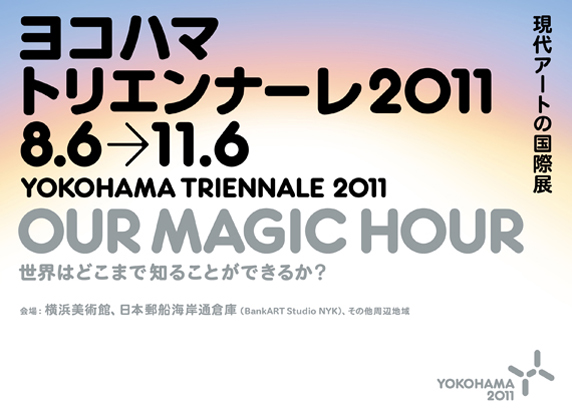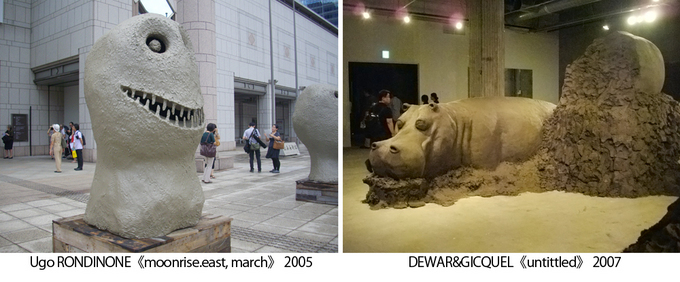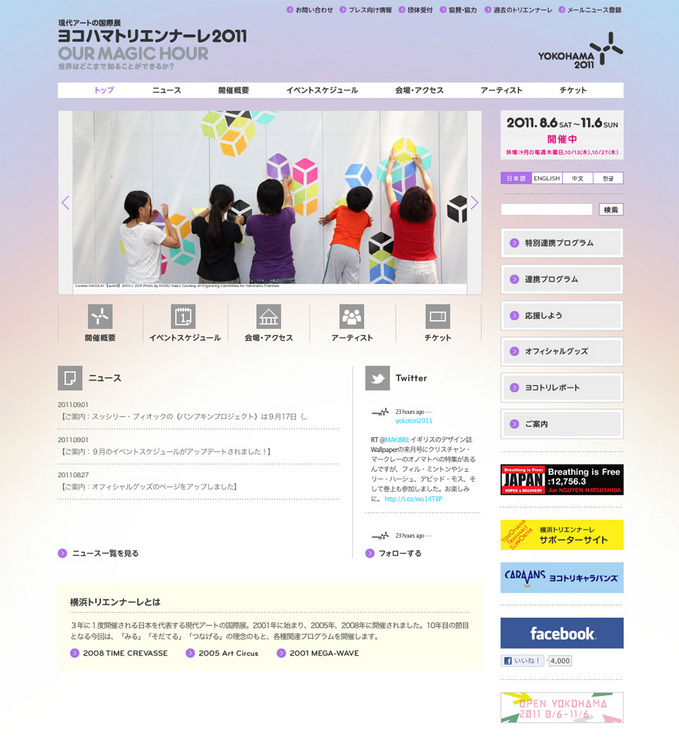A Review of the Yokohama Triennale Exhibition by Vincent Noce
Vincent Noce
Art critic and writer for the French daily newspaper Libération
It was wet in Yokohama. The patter of raindrops on the roof added to the fantastic imagery of the film The Clock. Yokohama is a city full of beauty and charm, with its port and parks and many museums (there is even a ramen noodle museum!) retaining their historical inheritance. This is part of what makes the city so appealing. What should a Parisian art critic see during his visit to Yokohama in mid-August?
The Yokohama Triennale 2011, an international exhibition of contemporary art, opened in early August. These days, several thousand art fairs and biennale and triennale exhibitions are held around the world every year. In addition, there are probably more than 500 municipalities and organizations planning to host such events in the future. However, not all of them will be able to meet the requirements necessary to host such affairs; in fact, many do not make it.
Many regional art events are held in the countries of Asia, but the combination of economic decline and social unrest means there are still only a few places where conditions are appropriate to display the innovative art of Europe. Yokohama, however, has overcome many hardships and obstacles in the difficult period following the Great East Japan Earthquake to put forth a message of hope through this event. With its high level of administrative skills, ample preparations made to receive the installations, the convenience of its infrastructure, and acceptance of freedom in art expression, the Yokohama Triennale exhibition has the potential to become a major world art event in future years if it opens its doors readily to European artists and creators.
In contrast, the art fair in Shanghai did not fulfill the conditions mentioned above, and although there were no organizational problems in the recent Singapore exhibition, the prohibition of nudes and drug-related art works were serious drawbacks. Just as fish cannot live out of water, art can only exist in the context of freedom of expression.
This review of the Yokohama exhibition by Libération, a Paris-based newspaper, has come about through the overwhelming desire to express solidarity with Japan. It is clear to all that the event's realization was not an easy task and that it was in danger of being canceled altogether. It is due to the commitment and efforts of city officials and members of the concerned organizations that the exhibition came to fruition. Although there has been a decline in tourists visiting Yokohama, I felt a great relief upon learning that the number of visitors to the exhibition has not differed to a great extent compared to previous occasions. A reduction in the number of art works could not be avoided, but the Triennale was fortunate in acquiring Akiko Miki as art director, and thanks to her efforts, not a single artist declined the invitation to participate. The selection of works was also brilliant.
With difficulties concerning logistics and insurance in the wake of the disaster, organizing such a large-scale exhibition constituted a major feat on a par with a military operation. The general public has no idea of the enormous energy required to display major works of art. Finding sponsors for the event, negotiating for the loan of art works, and obtaining permission to publish them in the catalog, all entail many days of negotiations between the organizer's lawyers and public relations people and the technocrats of major art galleries such as Gagosian and White Cube (in the market system, we do not always have free reign over our desires).
The outstanding video work The Clock, which immerses the viewer in a continuous 24-hour montage of film clips, caused a sensation in London, New York, and Moscow (it has not yet been shown in Paris), and was awarded the Gold Lion at the Venice Biennale. Its creator, Christian Marclay, a Japanophile, even arrived in person on the opening day of the Yokohama Triennale. The Japanese response to his video exhibit, which shows how contemporary society is dominated by time, should be of much interest to him.
It was also a great pleasure to view the wire lamps with crystallized salt (together with a video installation) by Sigalit Landau. She is a visionary artist who dreams of building a bridge of salt over the Dead Sea to connect Israel and Palestine. Her pavilion was the most ambitious in the Venice Biennale exhibition. Tobias Rehberger's light art exhibit, Anderer, evokes the way in which the ties of human relationships are repeatedly created and broken.
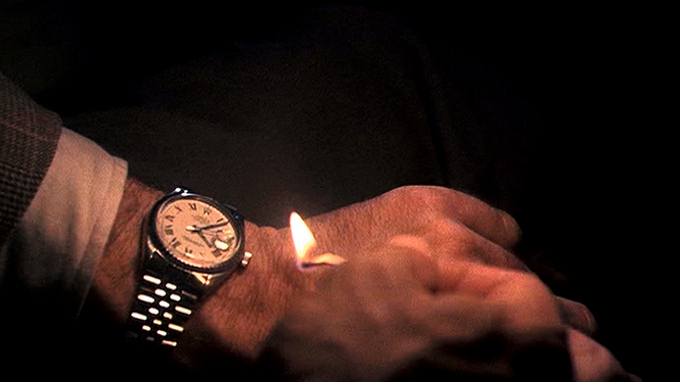
Christian Marclay
The Clock 2010
(c)The artist, Courtesy of White Cube
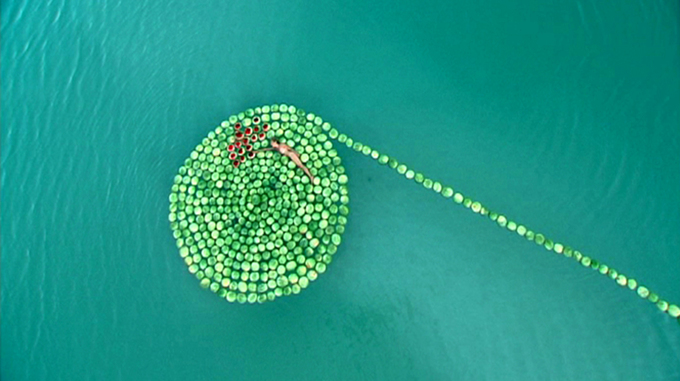
Sigalit Landau
DeadSee 2005
(c)Sigalit Landau
Courtesy of the artist and kamel mennour, Paris
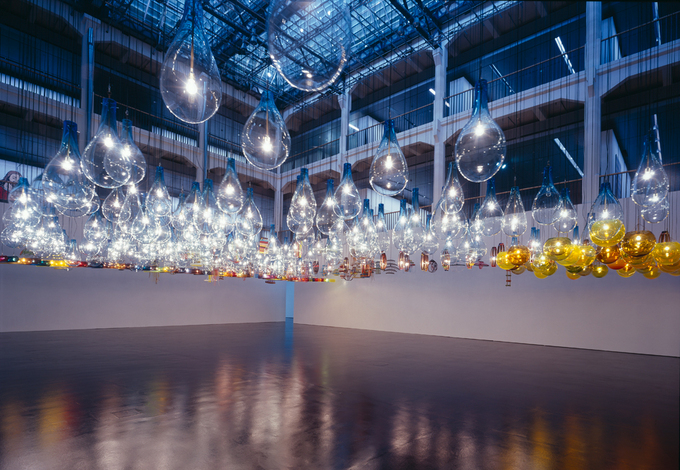
Tobias Rehberger
Anderer 2002
Installation view: Geläut - bis ichs hör..., Museum für Neue Kunst, ZKM, Karlsruhe 2002
(c)tobias rehberger, 2002
Courtesy of neugerriemschneider, Berlin
Photo by Wolfgang Günzel
I also viewed the performance in memory of James Lee Byars, who died in 1997, Ryan Gander's crystal balls, the beached hippopotamus by Daniel Dewar and Gregory Gicquel, and the whimsical video work of Peter Coffin featuring fruits revolving in space, all of which I delighted in. Perhaps there is a god of art presiding over Yokohama; to my great pleasure I was able to discover new works and talented artists that I had not known of before. And in this exhibition, I found my heart touched even by works of the Surrealist artists Man Ray, René Magritte, and Max Ernst, which I had previously found too abstruse.
The decision to feature exhibits by Japanese artists virtually unknown outside the country was a correct one. We do not have a lot of time at our disposal. Art critics, as well as many art collectors and art lovers, must view dozens or sometimes even hundreds of art works within a period of a few hours (which, incidentally, reminds me that we are controlled by time as expressed in Marclay's The Clock). It is even more difficult when you must do this in a foreign country, working in a state of cultural shock. I regret that I do not know enough of the background and intentions of the Japanese works. As a Westerner, I must ask forgiveness for encountering art works and artists without adequate knowledge of their cultural background and social mores. Even so, I was struck by the high quality of many of the works here, especially when many young artists in Europe today have abandoned their efforts to improve their artistic technique. I am talking about the precisely rendered animal images by Manabu Ikeda, the detailed and intricate collages by Ataru Sato, the mystique of Kazuna Taguchi's images of the stars, and the fantastic house of Han Sungpil, all creating a strong impact. We see countless messages of hope, not only in the images of streets and cityscapes but those of simple roads and houses as well.
As far as I could observe, only a few artists dealt with the earthquake-tsunami disaster. This was probably because there was not enough time to create works on that subject. And it can be said that the more sublime the art, the less effective it tends to be in putting across a message.
The exception is Yoko Ono, whose huge poster titled DREAM is displayed over the entrance to the museum. This, in fact, is very eye-catching. She has attempted to show that her homeland has recovered from the after-effects of the mental anguish it suffered. She says, "You are not disaster victims." I have used those words at the head of my article ("La réplique de Yoko Ono" September 3, 2011) published in Libération after my return to France. As an extension of her solo exhibition in Hiroshima titled Exhibition to Commemorate the 8th Hiroshima Art Prize: The Road of Hope; YOKO ONO 2011, she called at random to a telephone installed in her exhibit to chat with whoever answered. I saw her carrying out the same performance in Montreal. To a Westerner, the performance arouses feelings of awkwardness, but perhaps it is such chance encounters that have the power to touch the heart, especially with the Japanese.
In a tie-up program, Krzysztof Wodiczko: War and Art, the Polish-American artist shows his video work in an outside setting in which he combines footage of interviews of American war veterans (and their wives; often the wives of veterans suffer the most, and are the silent victims of war) with those of rescue workers and residents of Fukushima. The film is punctuated with cannon shots which relay the shocking content of the comments. In the video, one veteran says, "It will never be OK." We have had enough of war.
One artist who has dealt face-on with the tragedy of the tsunami disaster is Jun Nguyen-Hatsushiba, son of a Japanese mother and Vietnamese father. In a specially allotted area, he exhibits his video installation which put together images of the tragic experiences of the Vietnamese Boat People and the mass evacuations of the Great East Japan Earthquake victims. The successive images of towns and landscapes in ruins leave vivid impressions which speak for themselves, imparting a strong message and testimony. However, even such works are not able to transcend the creativity of the Japanese artists mentioned above.
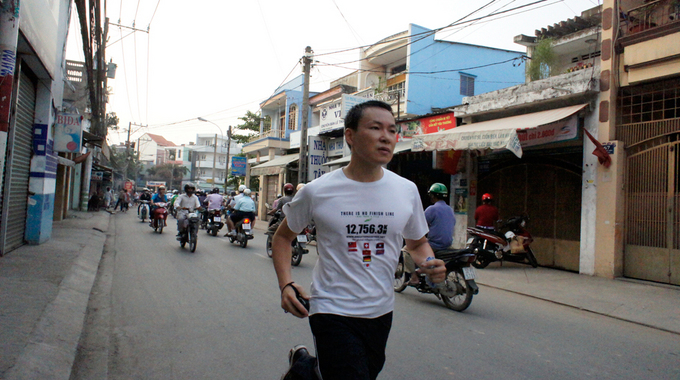
Jun Nguyen-Hatsushiba
Breathing is Free: JAPAN, Hopes & Recovery
2011
Courtesy of the artist and Mizuma Art Gallery
Photo by Nguyen Tuan Dat / Nguyen Ton Hung Truong
Vincent Noce
Art critic and writer for the French daily newspaper Libération.
Published works include Odilon Redon, dans l'oeil de Darwin (Redon as a Darwinian artist), a study of artists influenced by Darwin's theory of evolution; Claude Monet, l'oeil et l'eau (Claude Monet, the Eye and the Water), about Monet's love of water and his eye ailment (both published by Agence des Musées Français); and also La collection égoïste (Egoistic Collection), concerning stolen art collections; and Descente aux enchères (Descending auction), about the history of the auction house Hôtel Drouot (both published by Jean Claude Lattes). Noce is also known for his articles on food and wine, some of which have been published in Japan. He began his career as a freelance journalist, submitting articles for the newspaper Le Monde Diplomatique and other publications.
Subsequently, he worked for the AFP (Agence France-Presse) news agency for 13 years before taking up his present position in 1994.
The article ""La réplique de Yoko Ono" (Yoko Ono's reply; in French) was written after he returned from his visit to Japan.
YOKOHAMA TRIENNALE 2011 OUR MAGIC HOUR--How much of the world can we know?--
Continues until November 6, 2011
Related Events
Keywords
- Arts/Contemporary Arts
- International Exhibition
- Asia
- Japan
- Singapore
- Viet Nam
- France
- Yokohama Triennale
- Yokohama
- Christian Marclay
- art fair
- biennale
- Great East Japan Earthquake
- Europe
- Asia
- Shanghai
- Libération
- Akiko Miki
- Gagosian
- White Cube
- technocrat
- Venice Biennale
- Sigalit Landau
- Tobias Rehberger
- James Lee Byars
- Ryan Gander
- Daniel Dewar
- Gregory Gicquel
- Peter Coffin
- Man Ray
- René Magritte
- Max Ernst
- Surrealism
- Manabu Ikeda
- Ataru Sato
- Kazuna Taguchi
- Han Sungpil
- Yoko Ono
- Krzysztof Wodiczko
- Jun Nguyen-Hatsushiba
- Viet Nam
Back Issues
- 2022.11. 1 Inner Diversity<3> <…
- 2022.9. 5 Report on the India-…
- 2022.6.24 The 48th Japan Found…
- 2022.6. 7 Beyond Disasters - …
- 2021.3.10 Crossing Borders, En…
- 2020.7.17 A Millennium of Japa…
- 2020.3.23 A Historian Interpre…
- 2019.11.19 Dialogue Driven by S…
- 2019.10. 2 The mediators who bu…
- 2019.6.28 A Look Back at J…


